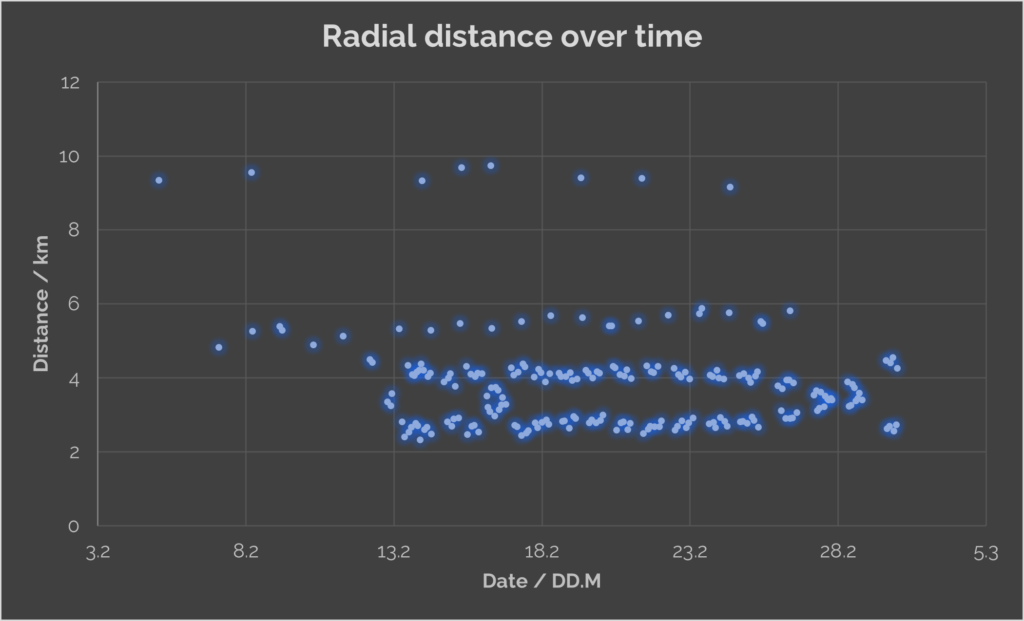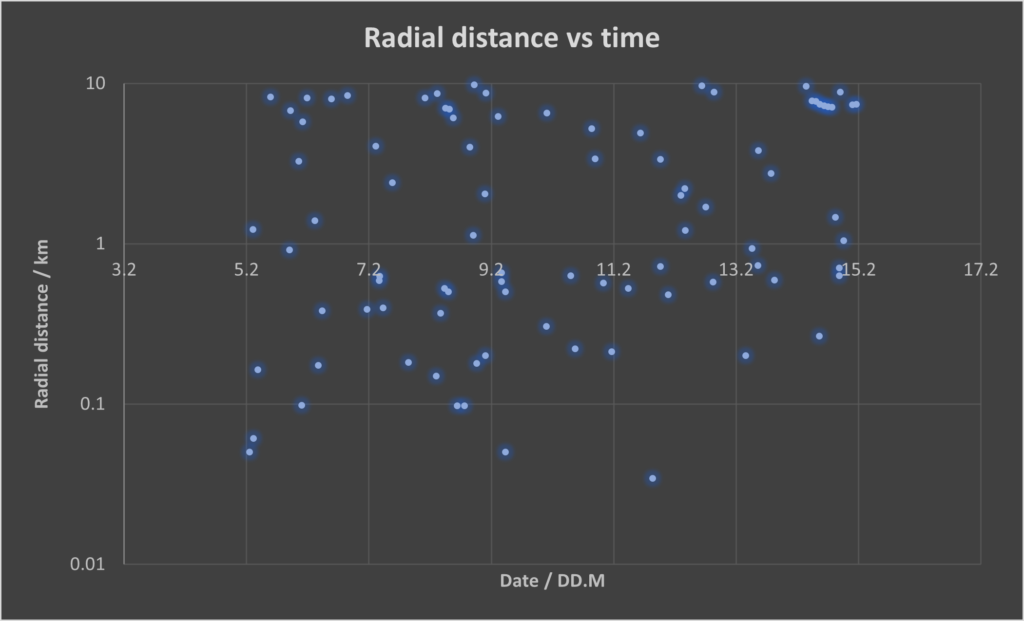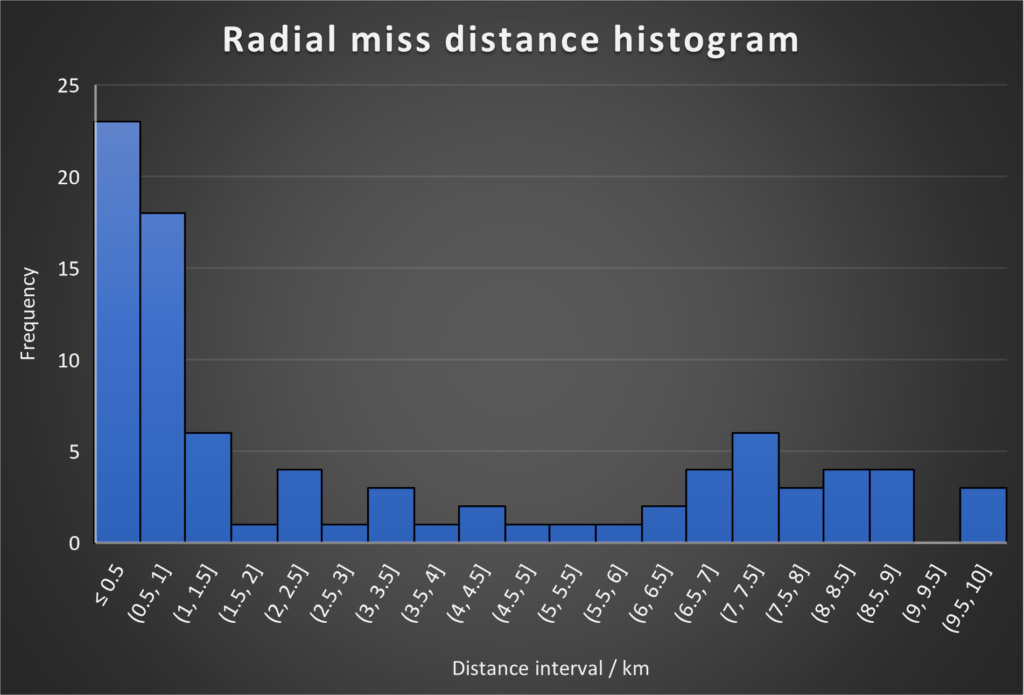GMS-T and OneWeb
After OHB got a lot of attention when placing their GMS-T placeholder in close proximity to OneWeb’s constellation at the beginning of the month, we got curious and started to analyse the situation with publically availbale orbital data. Using TLEs we performed a screening of the close approaches over 2 week into the future as shown below.

Every dot represents a close approach in the 25 x 25 x 25 km³ big screening volume. Shown is the radial distance between GMS-T and one of the OneWeb satellites. It is visible that up until the 13th of February, there are only a few satellites violating the screening volume. But from that day forward a pattern emerges, showing frequent 2 to 4 km close approaches. While this is nothing to panic about, it requires constant effort of supervision for both parties, especially when maneuvers are performed.
Salsat and Starlink
In another case we receive actual conjunction data messages for close approaches between TUB’s Salsat and StarLink satellites. In a similar fashion we screened for close approaches in the future based on public data to see what to expect and whether there is a pattern emerging. Below we can see the radial distance over time. Each dot represents a Starlink satellite in the screening volume.

Many of the close approaches are below 1 km radial distance as can be seen in the histogram.

While this is based on TLE data only, with a limited level of accuracy, we saw 3 conjunction events associated with three of those 38 objects below 1 km radial distance. Two events occured on the same day.
The screening for conjunctions is a continuous process and as such it is repeated as soon as new orbital data is available. Extrapolating in the future we found that the close approaches decrease over time, relaxing the situation and decreasing the number of conjunction warnings that have been received. Looking at the radial distance over a longer period of time we can observe that currently (24.02) there are very few encounter below 1 km radial distance between Salsat and StarLink satellites. Looking even further ahead, to the beginning of March, an increase in such encounters can be observed once more.

From this assessment we currently expect a new increase of conjunction data messages coming in starting between March 5th and 10th. In this effort we will continue to screen and update the post with new findings as time progresses.
Conclusion
Looking at both cases, we find that
- for satellite missions in close proximity to constellations an increased number of conjunction warnings can be expected.
- While in most cases these warnings are found to be false alarms, continuous observation and analysis is needed to infact prove that we are dealing with a false alarm.
- In addition, these warnings may appear in repeating patterns, based on the design of the missions orbits thus resulting in times of increased number of warnings followed by a phase of decreased number of warnings.

